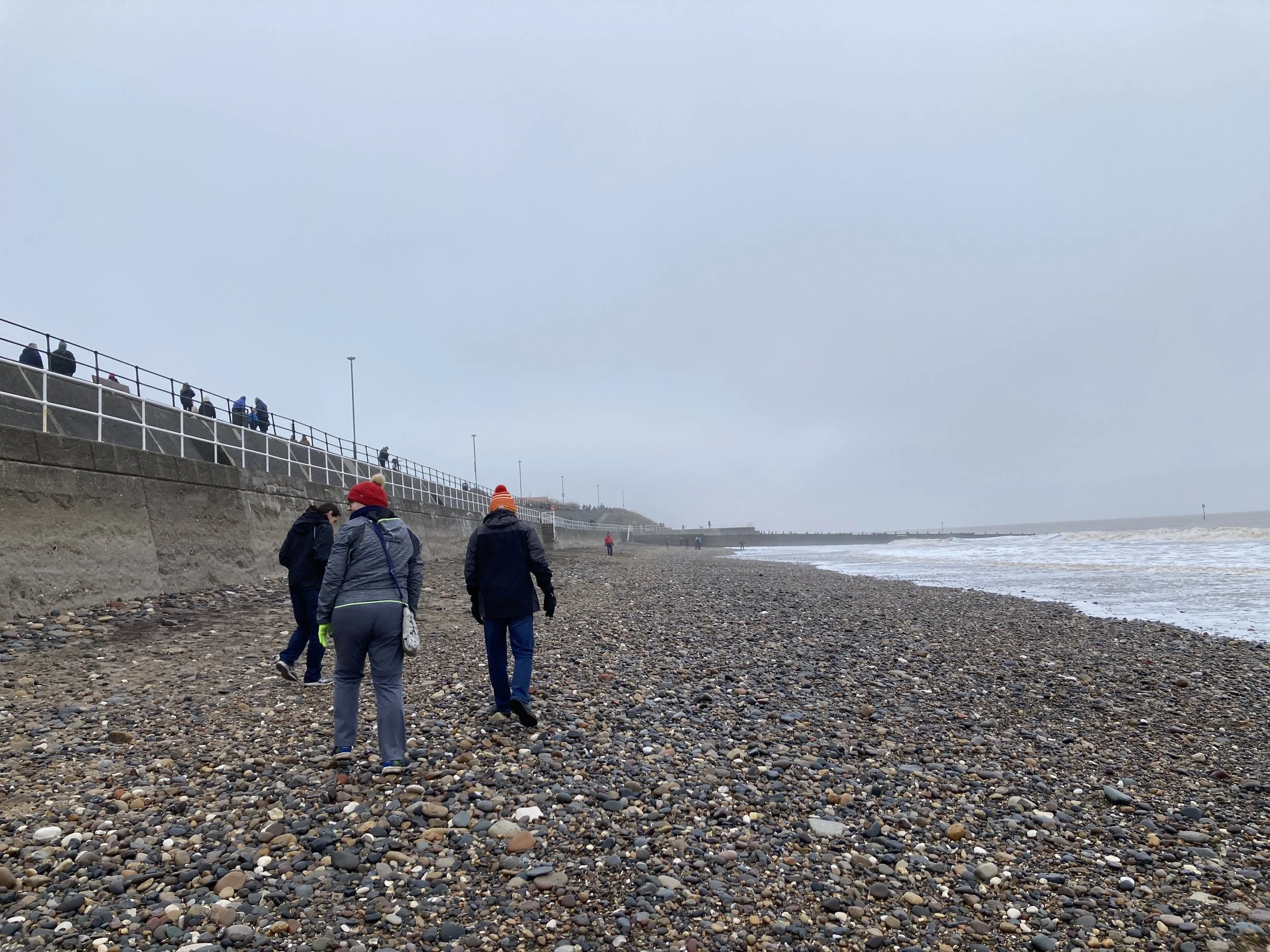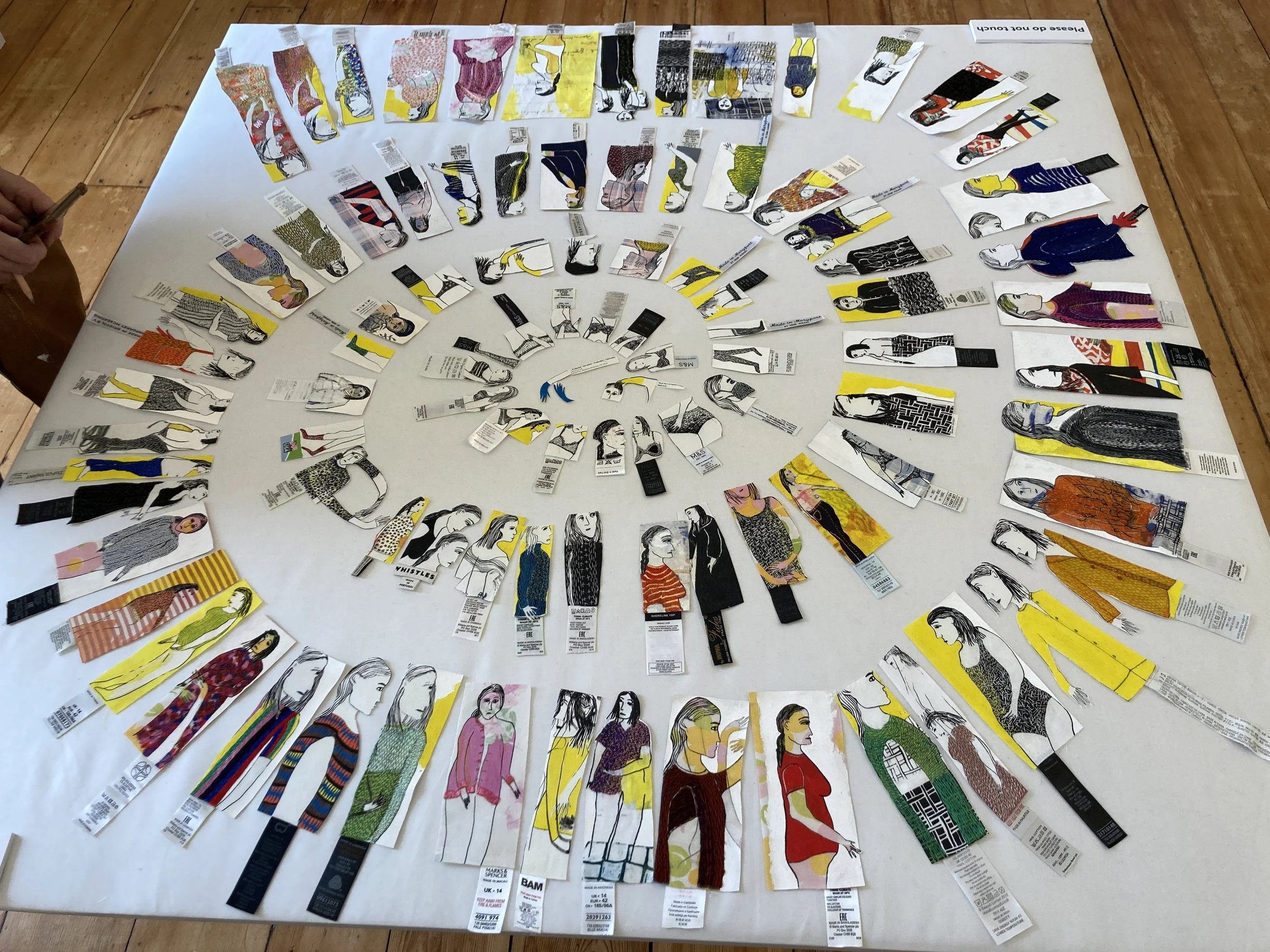Research-Informed Practice
Back in another life my work was all about developing research-informed resources to support science teachers’ practice. It has been a pleasure to return to this way of working, to begin to make my textiles practice research-informed.
I have just submitted my work for this semester, an Illustrated Research Journal. I began by carrying out a material cultural analysis on two textile items (Mida and Kim, 2015). My first item was my Guide uniform from the 1963, which had a military heritage through Baden-Powell (Maynard, 1963), so for my second item I sought a military uniform. Whilst there are many uniforms in museums, most were not very accessible in these Covid times, however the archivist at Eden Camp Modern History Museum, not far from York, was more than happy to help.
Fig. 1 1963 Girl Guide blouse
Looking at my Guide uniform through the eyes of a researcher was fascinating, I noticed all sorts of things I wouldn’t probably have seen before, including the construction of seams, pockets and sleeves. As I ironed it, I remembered carrying out the same action as a teenager before rushing out the door on a Tuesday(?) evening to Guide meetings and I gradually recalled some of the other girls and even their names!
Fig. 2 Pencil drawing button and placket
I am pleased to find that my drawing has definitely improved over the first year of the course. I have become better at observing, and taking time over the task. I was particularly satisfied with this detailed drawing of a button and placket.
I shall continue to practice, trying to draw every week, if not every day.
Fig. 3 Polish soldier’s battledress blouse c.1940 (Eden Camp)
Researching the military uniform was fascinating in different ways. This was the battledress blouse of a Polish soldier who fought with the western allies in World War Two, after the invasion of Poland in 1939. There were Polish soldiers billeted at Eden Camp prior to the invasion of mainland Europe by the Allies, so maybe that was why this uniform was given to this museum. In my research I learned much about the 1939-45 war that didn’t feature in O-level History!
These two uniforms led me to consider the effect of uniforms on both the wearer and those observing the wearer. As with any research, there was much to read and many more rabbit holes to go down than I could possibly include in 2000 words! I settled on two aspects – firstly ideas of identity and belonging for the wearer and secondly the way that uniforms en masse can affect observers.
As this was to be an Illustrated Research Journal it needed to include visual responses to the research as well as the text and an annotated bibliography. These visual investigations could be in any media, and would draw on our work from earlier in the course. It was good to go back and look again at work from last year for inspiration.
Fig. 4 Badges in pairs
Part of the identity of a Guide or soldier is made visible by the badges on the uniform, on the Guide uniform proficiency badges are placed in pairs down the sleeve.
I created a cross-hatching in stitch and then removed some stitches to leave negative spaces in an ordered array. I was in two minds about whether to leave the tails of thread or take them all through to the back, as you see in the end I left the horizontal tails.
In my research on the Imperial War Museum (IWM) website I found images of the Polish Armed Forces in the West, many of whom were based in Scotland. I used photographs of soldiers marching in Scotland to create stencilled images, both digitally and with oil pastels – thanks to Sabi Westoby for inspiring these last two.
Fig.5 Oil pastels and stencil using item H3067 from the IWM Archive (Horton, 1940a)
Fig.6 Digital manipulation of IWM Archive image H3068, printed onto fabric and stitched. (Horton, 1940b)
References
Horton, W.G. (1940a) A Polish celebration in Scotland [Photograph]. Catalogue number H 3067. Available from: https://www.iwm.org.uk/collections/item/object/205259549 [Accessed: 9 November 2021]. Fig.5
Horton, W.G. (1940b) A Polish celebration in Scotland [Photograph]. Catalogue number H 3068 . Available from: https://www.iwm.org.uk/collections/item/object/205259550 [Accessed: 9 November 2021]. Fig.6
Maynard, A.M. (1963) Be Prepared. Revised Edition. London: C. Arthur Pearson.
This handbook for Guides, originally written in 1946, provides a background for any girl wanting to be a Girl Guide. This edition was in use at the time the uniform being researched was worn.
Mida, I. and Kim, A. (2015) The dress detective: a practical guide to object-based research in fashion. London: Bloomsbury.
This book was written by two dress historians who are also museum curators. Chapters 1-5 provide a good insight into the process of Material Cultural analysis.


















